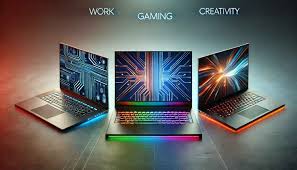The AI Engine and the Quantum Dot: Key Tech Trends Defining 2025's Flagship Laptops
Editor
Jun 20, 2025
min read
5 views

Looking across the landscape of 2025's flagship laptops reveals more than just faster processors and brighter screens; it shows a convergence of key technologies that are fundamentally reshaping mobile computing. Two trends stand out as the most impactful: the universal integration of powerful Neural Processing Units (NPUs) for AI tasks, and the near-complete takeover of advanced display technologies like OLED and Mini-LED. These are the pillars upon which the next generation of laptops is built. The most significant shift is the rise of the NPU, a dedicated processor core designed specifically for artificial intelligence and machine learning workloads. In 2025, it is no longer a niche feature but a standard component in flagship CPUs from Intel (Core Ultra series), AMD (Ryzen AI), and Apple (M4 series). This dedicated AI engine is a game-changer for both performance and efficiency. It allows laptops like the Dell XPS 16 and HP Spectre x360 to perform complex AI tasks—such as real-time background blurring and noise cancellation in video calls, generative image creation, or intelligent battery management—without bogging down the main CPU or GPU. This results in a faster, more responsive system and significantly improved battery life, as the NPU can handle these constant, low-level tasks far more efficiently than general-purpose cores. For users, this means smarter, more context-aware applications and a laptop that actively works to optimize its own performance. We are entering the era of the 'AI PC,' where the laptop is not just a tool but an intelligent partner, and the NPU is its brain. The second defining trend is the new standard in display excellence. The era of the standard IPS LCD panel on a flagship laptop is over. In 2025, the choice is between two superior technologies: OLED (Organic Light-Emitting Diode) and Mini-LED. OLED technology, seen on flagships like the Razer Blade 16 and Dell XPS 16, offers per-pixel illumination. This means each pixel can be turned on or off individually, resulting in perfect black levels, infinite contrast, and incredibly vibrant colors. Their near-instantaneous response times also make them ideal for gaming, eliminating motion blur and ghosting. Mini-LED technology, championed by Apple in its MacBook Pro and Asus in its ROG Strix SCAR 18, is a radical evolution of traditional LCD. It uses thousands of tiny LEDs as a backlight, grouped into hundreds or even thousands of local dimming zones. While it cannot achieve the per-pixel control of OLED, it can get incredibly close, producing deep blacks and excellent contrast. Its key advantage is the ability to achieve much higher levels of sustained, full-screen brightness, making it a superior choice for HDR content creation and consumption. The widespread adoption of these two technologies means that whether a user chooses a flagship from Apple, Dell, Razer, or Asus, they are guaranteed a visual experience with a level of color accuracy, contrast, and vibrancy that was confined to professional reference monitors just a few years ago. Together, the AI engine and the quantum-dot-level displays are creating a new breed of flagship laptops. These machines are not only more powerful in traditional metrics but are also smarter, more efficient, and provide a far more immersive and visually stunning user experience than ever before.
Editor
League Manager Editorial Team






Leave a Comment